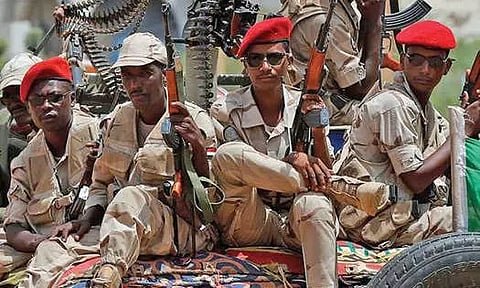

CATHRIN SCHAER
War crimes, massacres, mass displacement and a worsening humanitarian crisis have been reported during the eight-month conflict in Sudan, and many observers are now asking whether the country is on the brink of becoming a failed state or being split apart. On Friday, the UN Security Council agreed to end its special Integrated Transitional Assistance Mission in Sudan, also known as UNITAMS. The Sudanese government had requested that the mission end because it “was failing to meet expectations.”
UNITAMS was established in 2020 to support Sudan’s transition toward democracy after a combination of military pressure and civilian protests succeeded in ending the rule of the country’s long-running dictator, Omar al-Bashir. Instead of moving toward democracy, though, Sudan seems to be moving toward even more turmoil and violence.
UN bodies operate at the pleasure of host governments and have faced more hostility in African nations recently, especially in countries such as Mali and Gabon, which have recently undergone coups. The United Nations still has other agencies operating in Sudan.
Two major military groups inside Sudan have been fighting one another since April. They are the Sudanese Armed Forces, or SAF, and the Rapid Support Forces, or RSF.
The SAF has about 200,000 personnel and is headed by Abdel Fattah al-Burhan; it works more like a regular army. Meanwhile the RSF is estimated to have 70,000 to 100,000 personnel and is headed by Mohammed Hamdan Dagalo, better known as Hemedti. The RSF works more like a guerrilla force.
The SAF has more equipment, including tanks, helicopters and an air force, but is not as battle-hardened as the RSF. The forces are relatively equal in terms of ability, and neither has managed to overpower the other. This has led to what the German Institute for International and Security Affairs calls a “strategic stalemate.”
The fact that the RSF and SAF are equally strong is a result of how they were formed, experts say. Former dictator al-Bashir first created the RSF in 2013 as a counterbalance to the SAF to ensure that the military never got too strong to challenge his rule and launch a coup. The RSF evolved from the notorious Janjaweed militias in Darfur, which were formed by fighters in Arab tribes in that area. One of the Janjaweed’s main objectives was the targeting of non-Arabs in Darfur, and this has continued.
That makes the current situation “unprecedented,” Hager Ali, a research fellow at the German Institute for Global and Area Studies (GIGA), told DW. “There are two military organizations that are fairly evenly matched, but that have no platform or interface between them for negotiations,” said Ali, who has published extensively on Sudan. “When it comes to peace building and the negotiations, there’s not much of a playbook for this particular constellation.”
After the end of al-Bashir’s regime, the military agreed to share power with civilians until real elections could be held. That was in August 2019. In late 2021, any transition toward democracy ended when the Sudanese military took control of the country in a coup. That included both the SAF and the RSF.
Nonetheless, negotiations about how to share power between all actors, including civilian parties, went on, even though they were very difficult. The two militaries effectively managed to exclude Sudanese civil society from national politics, Ali said. In March, a proposal that would have seen the RSF absorbed by the SAF worsened tensions between the militaries. Growing political ambitions held by RSF chief Hemedti reportedly also played a part.
This article was provided by Deutsche Welle